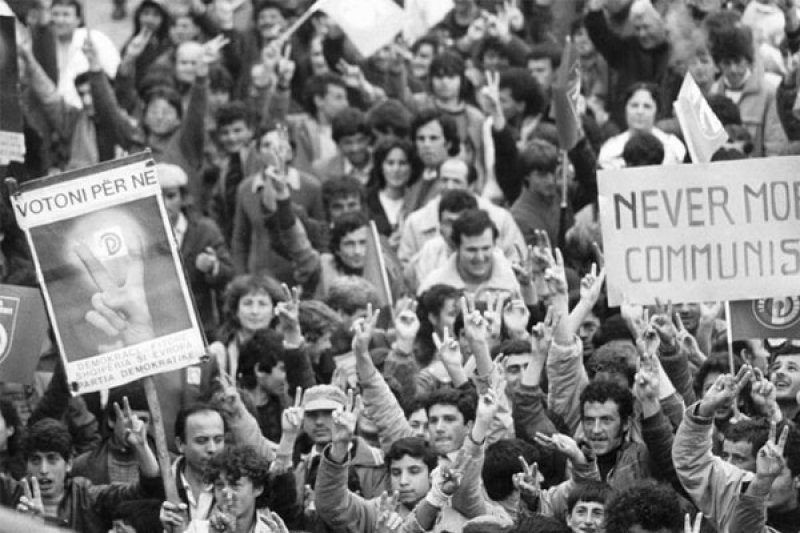Albania Celebrates Youth Day, Students' Protest that Overthrew Communism
Albania is celebrating this Thursday the National Youth Day, which aims at commemorating every 8th December the student’s protests in the early years of 1990 against dictatorial regime of Enver Hoxha.
Students of what was then the Enver Hoxha University, now the University of Tirana, marched through city streets, demanding reformation of the political system.
The march started on 8 December 1990, but the number of protesters reached 3,000 by December 11, forcing the predecessor of Hoxha, Ramiz Alia to meet with the students in order to quiet the unrest. He agreed to take further steps to democratize Albania. This is how the long process of replacing the old communist regime with democracy begun.
However, 8th December was declared as the Youth Day for the first time in 2009 with the proposal of Prime Minister at that time, Sali Berisha to remember this important day which marked the first movement to overthrow the iron regime of Enver Hoxha.
Albania had become the People’s Socialist Republic of Albania after the Iron Curtain fell across Eastern Europe at the end of W.W.I.I.
Even though it was never a part of the Soviet Union, its government accompanied a Marxist Communist strategy with a high degree of state control and administration. As a result, Albania became an isolated country and one of the most difficult to visit in the world.
It was arguably one of the most successful communist regimes, in terms of economic success, albeit one that was built on heavy lending from other socialist states.
However, the state also silenced many freedoms, including the right to hold political opinions and religious beliefs. In 1967, it declared itself the world’s first atheist country, outlawing Christmas.
Leaders in Albania were alarmed by the fall of the Berlin Wall and by the protest movement in Romania that led to Nicolae Ceau?escu’s execution as its leader. The Helsinki Agreement, which improved human rights, replaced the Warsaw Pact.
Numerous demonstrations had occurred in various areas during 1990, but on the evening of December 8, 1990, students in Tirana, the country’s capital, organized a rally.
The students marched to seek political change in the country, but as is so often, their focus soon switched to other, more pressing causes after they started to protest the loss of energy.
Because of the other changes occurring in Eastern Europe and the Soviet Union at the time, Albanian rule was ruined, but it was only a question of time first before the country experienced regime change. The student protests lit a fire that was already smoldering.
Protests became known as the December Movement, and they compelled the Central Committee of the Communist Party of Labour of Albania to support political pluralism on December 11, 1990, with the Democratic Party being established the next day.













